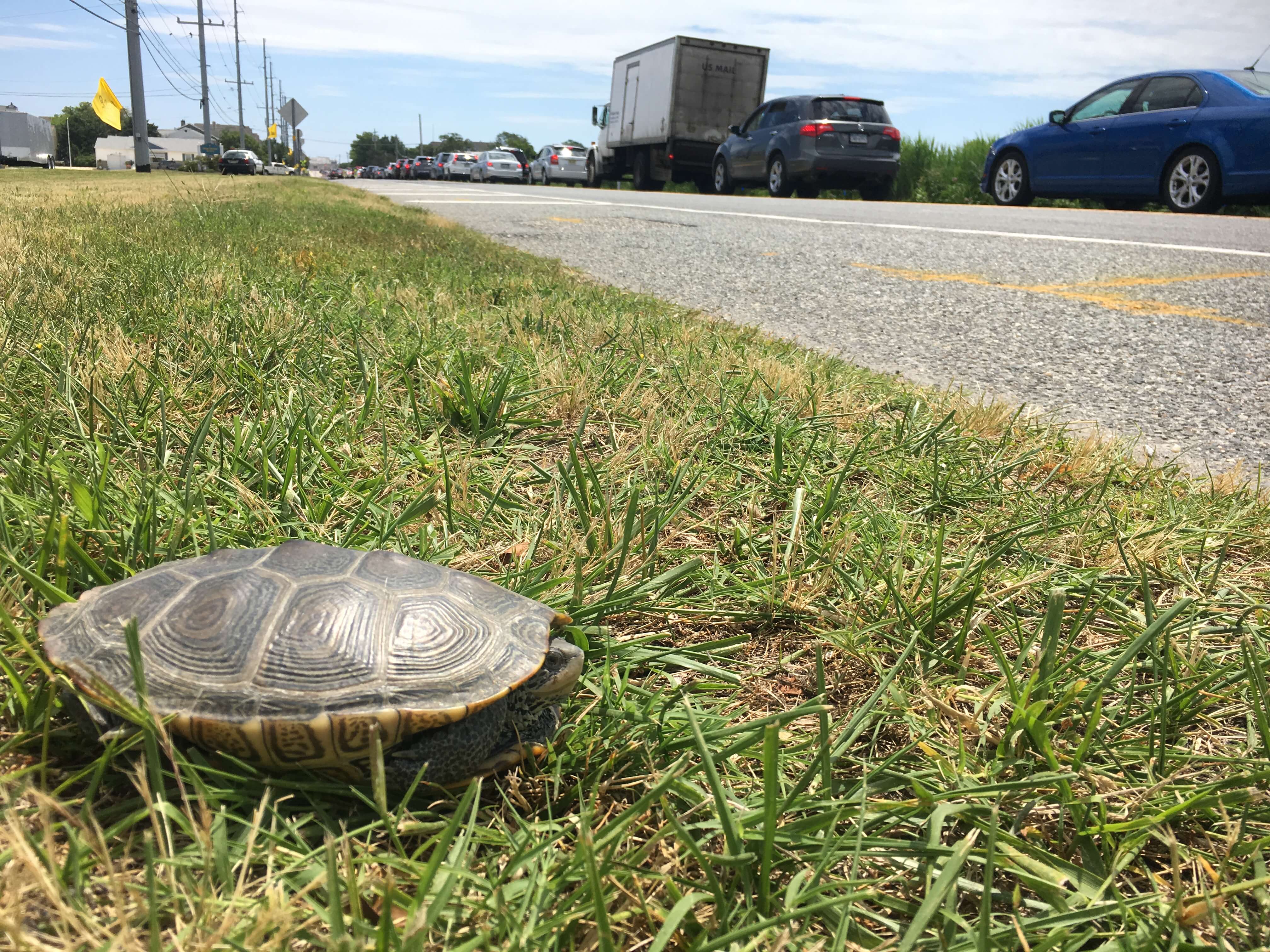STONE HARBOR – Across the Eastern seaboard, female terrapin turtles are making the annual trek to reach nesting grounds. The turtles are known to crawl out into summer traffic to reach their destination, where they are at risk of being struck and killed by motorists.
“They (terrapins) are very important to us,” said Brian Williamson, research scientist, The Wetlands Institute.
Williamson joined The Wetlands Institute staff in October 2013 after obtaining a Master’s degree in Biology from Marshall University. Williamson oversees diamondback terrapin research and, during nesting season, is especially busy.
According to Williamson, terrapins compose an important part of the local ecosystem. They are the only turtle that can live their entire lives in brackish (mixture of salt and fresh water) waters.
Feeding on invertebrates, terrapins help keep the Periwinkle marine snail population in check. If not for the terrapins, the Periwinkles would “overgraze the marsh,” said Williamson.
Although their habitat stretches from Maine to the Florida Keys, terrapins help keep South Jersey marshlands vibrant, said Williamson.
Why do terrapins leave the safety of the marsh? During nesting season (May-July), females return to the same area where they laid their eggs.
According to Williamson, females often return within feet of a previous nesting site. As coastal communities develop, “artificial” nesting areas are created and females utilize these higher-ground areas.
Williamson said over 500 females die along county roads each year: “2018 was a hard year.” Statistics for 2019 have not been calculated.
A warning sign was installed along North Wildwood Boulevard, which alerted motorists of turtles crossing. Road signs have also been installed across South Jersey. Additional signage initiatives are underway in Cape May County (http://bit.ly/2J5Sz72).
Conservation efforts elsewhere in the state include installation of terrapin fences. Fences and signs cannot eliminate all fatalities, Williamson said. Higher volumes of traffic often make it difficult for motorists to see turtles.
Awareness and education are two primary tools in combating turtle deaths.
Williamson said that a dead female’s eggs can be harvested and incubated. State funding provides for the incubation period before releasing the young turtles into their natural environment.
How turtles spend their infancy in the wild remains a mystery, according to Williamson. Young terrapins are not usually found in low-lying tidal areas. Adult terrapins live in low areas until nesting season begins, said Williamson.
Nests are hard to spot, according to the Massachusetts Audubon Society. A nesting site is usually near vegetation.
“Classic” signs include comma-shaped tracks, round disturbances in the sand, or a ridge created by the female’s shell as she dug.
Media sources indicate that terrapins were a common food source for Native Americans and European settlers. By the 1900s, the turtles hovered on the brink of extinction due to delicacies such as terrapin stew.
Prohibition helped save terrapins since sherry (a primary ingredient in turtle soup) was banned.
In 2002, terrapins were added to the state Endangered and Threatened Species list as “a species of special concern.” However, a hunting season was allowed until a 2014 poaching report showed illegal harvesting of adult terrapins. The state Department of Environmental Protection closed the hunting season by administrative order in 2014-2015.
Williamson laid out an action plan for motorists if a turtle is spotted on the road.
• Consider personal safety before assisting a turtle. Those who can safely leave their vehicle, may gently lift the turtle and take it to the other side of the road. Point the turtle in the direction it was going.
• Avoid the terrapin’s mouth, but know that terrapins cannot reach as far as a snapping turtle.
• If a turtle is injured, call an animal rescue organization.
According to Williamson, injured terrapins can be rehabilitated and then released back into the wild.
“We need to be aware,” Williamson said. Getting the word out on these remarkable creatures is key to their survival, he added.
To contact Rachel Rogish, email rrogish@cmcherald.com.







